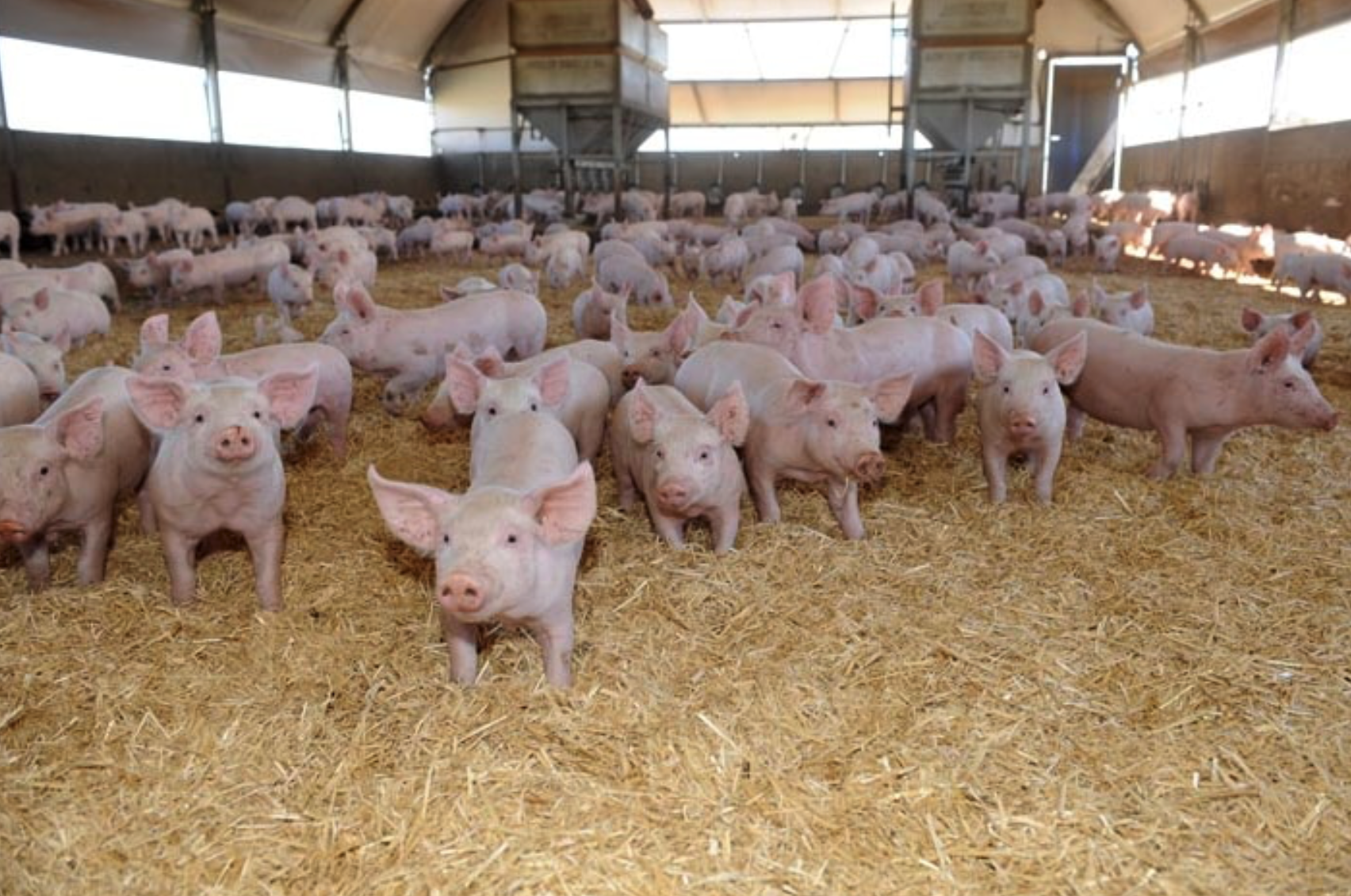
Intensive Livestock - Pigs
Pigs
Pig Production Overview
The Australian pig industry has developed from a ‘sideline’ industry to grain and/or dairy production to become significant in its own right. The gross value of the pig meat industry was $1.353 billion in 2016, having increased at an average annual rate of less than 1% over the 14 years 2002 to 2016. In 1960 in Australia there were around 50,000 pig producers with a total of 211,000 sows and an average of 4.3 sows. The national sow herd peaked at 460,000 in 1972 and declined to around 300,000 sows by year 2000. Despite the fall in herd size, annual output increased (from about 200 kilo tonnes to 370 kilo tonnes) through efficiency improvements and higher slaughter weights (averaging 55 kilograms in the 1970’s to 73 kilograms by 2005). Although the greatest number of pig farming establishments are in New South Wales, the larger herd sizes in South Australia, Queensland and Victoria mean that these States produce the largest pig meat gross value (24.1%, 23.7% and 23.5% respectively).
The 1980s and early 1990s were years of consolidation for the pig meat industry, underpinned by strong research efforts involving government and producers. Significantly it was also an era of no frozen pork product importation, but this ended in the mid-1990s, and in the years since that time, exports have fallen, the number of pig producers has reduced, there has been considerable consolidation among processors, and importation of pig meat has risen dramatically. Over the past five years imports of bacon, ham and other smallgoods rose at a rate of 23% per annum.
Australia’s pig production and processing sectors are re-stabilising after a period of rationalisation following a period of corporate takeovers and aggregations and agreements to import value added pork and smallgoods products from, predominantly, North America and Europe.
Pig Production Overview cont..
Swine fever outbreaks and impacts on worldwide pig herds, and an increased focus on biosecurity has changed the immediate prospects for investment in Australia’s pig industry. This has raised the longer-term outlook for increasing production of baconers (pigs for ham, bacon and other smallgoods) for the domestic market and to not just focus on porkers (pigs for fresh pork markets). The recent second wave of swine fever in China has reportedly reduced the pig herd by 20-30% in a country where pork is the major animal protein consumed. Although this is not necessarily an opportunity for export of Australian pork (for which only 10% of product is currently exported to all markets), it is an indicator that world supply is likely to be below demand for several years (longer if there are further disease outbreaks), at a time when Australian domestic demand is stable.
Pig Production in G21 Region
Golden Plains is the most significant area for pig production in G21 region. Genetic supplier, Pork Storks Australia is also located in Golden Plains Shire. There are undoubtedly a number of farming operations which specialise in other products, with a small herd of pigs, and with a particular focus on whole of life free range production.
The 2014-15 Australian Bureau of Statistics Agricultural Commodities data reported that the G21 region had 17 pig farms, accommodating around 28,500 pigs. Six of these farms had breeding sows. There are undoubtedly a number of farming operations which specialise in other products, with a small herd of pigs, and with a particular focus on whole of life free range production.
Most of the producers in the region promote free range bred or whole of life free range production.
There are no pig processors in the G21 region. The nearest processing facilities are Diamond Valley Pork in Laverton (which processes product for Pastoral Pork including the Otway Pork brand) and the multi-species abattoir Koallah Farm, near Camperdown.
The industry restructuring (through acquisitions, mergers and rationalisation), the introduction of a phase-out period for non-stall sows, and import competition have all contributed to the reduction in the number of growers, and the proportion of independent growers, not only in G21 region (where urban development pressure and expanded rural living/rural retreat landholdings have been significant) but throughout Victoria.
G21 Pig Value Chain
The pig industry is highly vertically integrated. Vertically integrated supply chains represent about 5% of all operators in the industry, but account for about 60% of industry production. ‘Corporate pig farms’ tend to have more than 500 sows. Some vertically integrated firms, such as George Weston Foods, also operate in ham, bacon and smallgoods manufacturing. About 30% of farms are contract growers and the remaining 65% of producers are small producers (generally less than 100 sows) that produce pigs in addition to other primary production, such as grain growing.
The three main functional supply chains are:
Vertically integrated processors operations (fresh meat processors and processors/smallgoods manufacturers), which contract to growers.
Independent growers selling to meat processors, specialty retailers (butchers) and food service outlets.
Opportunistic or ‘spot sales’ to processors.
Animal health, welfare and biosecurity, Victorian Farmers Federation, StockSense: https://www.vff.org.au/project/stock-sense/
Report roaming livestock or a dog attacking livestock to the City of Greater Geelong: https://www.geelongaustralia.com.au/pets/task/item/8d9be4359405bda.aspx . If it is an emergency phone 03 5272 5272.
Report roaming livestock or a dog attacking livestock to the Colac Otway Shire: https://www.colacotway.vic.gov.au/My-property/Pets-animals-livestock/Pest-problem-animals. If it is an emergency phone 03 5232 9400.
Report roaming livestock or a dog attacking livestock to the Surf Coast Shire: https://www.surfcoast.vic.gov.au/About-us/Council/Laws-and-regulations/Animal-laws . If it is an emergency phone 03 5261 0600.
Report roaming livestock or a dog attacking livestock to the Golden Plains Shire: https://www.goldenplains.vic.gov.au/resident/pets-and-animals/livestock If it is an emergency phone 03 5220 7111.


